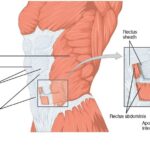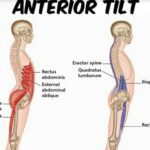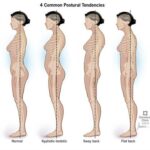With all of the steps we take in a single day, it’s no wonder our feet often become the subject of pain and discomfort. It is the foundation that houses fifty two bones, sixty six joints, two hundred and fourteen ligaments and thirty eight muscles that propel us through our daily lives. Whether walking to and from the office, or getting in a few miles of a training run, simply understanding the unique set of actions and reactions your foot performs while in motion could help prevent injury and make for a smoother ride.
What is Pronation?:
Pronation refers to the natural inward roll of the foot. Everyone pronates to some degree when they walk or run; it is part of the body’s shock absorption system. Upon initial contact with the ground, the heel rolls inward and distributes the forces of impact through the remaining gait cycle up to when pushing off from the front of the foot. The degree to which how much of a roll occurs determines whether overpronation or underpronation is present.
Overpronation:
As the outside of the heel makes ground contact, the foot rolls inward more than the ideal fifteen percent of normal pronation, making it more difficult for the foot and ankle to stabilize the rest of the body and where shock isn’t absorbed as efficiently.
Effects of Excessive Overpronating: Because the foot isn’t evenly absorbing the shock of your stride, it instead passes that unintended shock on to your legs, knees, hips, and even spine, creating injuries such as plantar fasciitis, bunions, medial knee pain, and stress fractures to the big toe. Those with flat feet are more known to be overpronators. Because your arches can’t fully support your step, the foot rolls too far inward, twisting your foot, leg, and knee and forcing your body out of proper alignment.
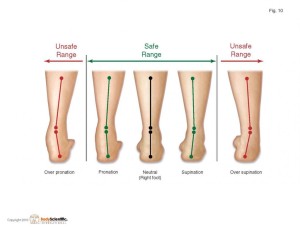
Underpronation (aka Supination):
Though more uncommon than those who overpronate, people who underpronate are still subjected to foot and other lower body injuries. With underpronation, the body weight remains on the outside of the foot as it passes though the gait cycle, distributing more weight along the outside of the foot and pushing the anklebone out. The smaller toes must do most of the work during push-off, decreasing efficiency of walking and running.
Effects of Excessive Underpronation: Strain on the ankle muscles and tendons and a decrease in ankle flexibility are some of the common setbacks. Those with high arches and tight Achilles tendons are more known to supinate. Not sure what type of arches you have? Performing a “wet test” will give you a general idea. 1) Place some water in a shallow pan, 2) Wet the sole of your foot, and 3) step directly on a brown shopping bag or heavy piece of paper. The footprint left on the paper will illustrate your foot type.

Diagnosis and Treatment:
The most definitive way to access your pronation pattern is through a professional gait analysis with a qualified podiatrist or sports medicine practitioner. However, you could also have an idea by the wear patterns on the bottom of your walking or running shoes. Excessive wear along the big toe and inside arch indicates overpronation, while wear along the outside edge of the shoe indicates underpronation.

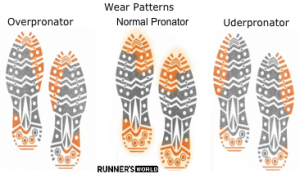
Once a thorough assessment is made, you may be suggested to wear orthotic inserts and/or a certain style of shoe. These kinds of shoes differ from each other for a whole series of characteristics, the most important of which reside in the midsole of the shoe. The three categories of shoes include motion control, neutral, and cushioning support, and may vary by brand. Keep in mind that even with proper shoes and orthotic inserts, it is just as important to maintain strength and flexibility in the feet and lower legs to help prevent repetitive use injuries.
References
- http://www.runnersworld.com/running-shoes/pronation-explained
- http://www.active.com/running/articles/overpronation-why-it-happens-and-what-you-should-do-about-it
- http://www.runningshoesguru.com/2009/03/a-simple-test-to-determine-your-foot-type-neutral-pronator-supinator/
- http://www.livestrong.com/article/11597-need-underpronation/
- http://melbel.hubpages.com/hub/Pronation-Running-Shoes-Shock-Absorption
Illustrations:
- http://www.thisrunnersrecipes.com/what-runners-should-know-about-overpronation-and-underpronation/
- http://www.centennialsd.org/Page/5459
- http://www.qualisys.com/runninganalysis/analysis/
- http://www.portsideathletics.com/2015/04/you-should-be-doing-this-changing-your.html
This article/video is for educational purposes only; do not attempt without your physician’s clearance. If you are in pain or injured, see your physician.
Copyright © Vidal Sports LLC 2018





